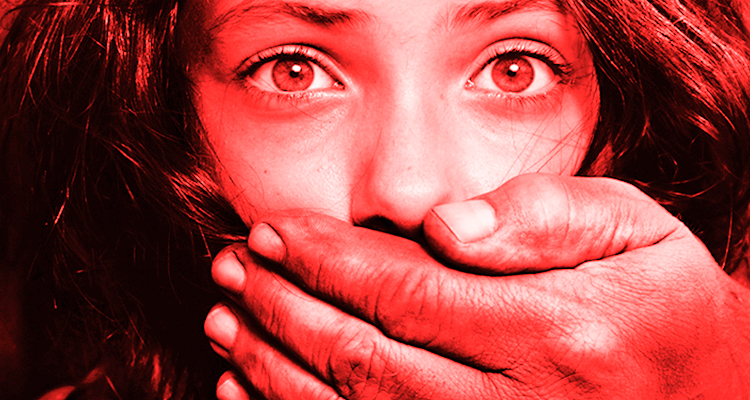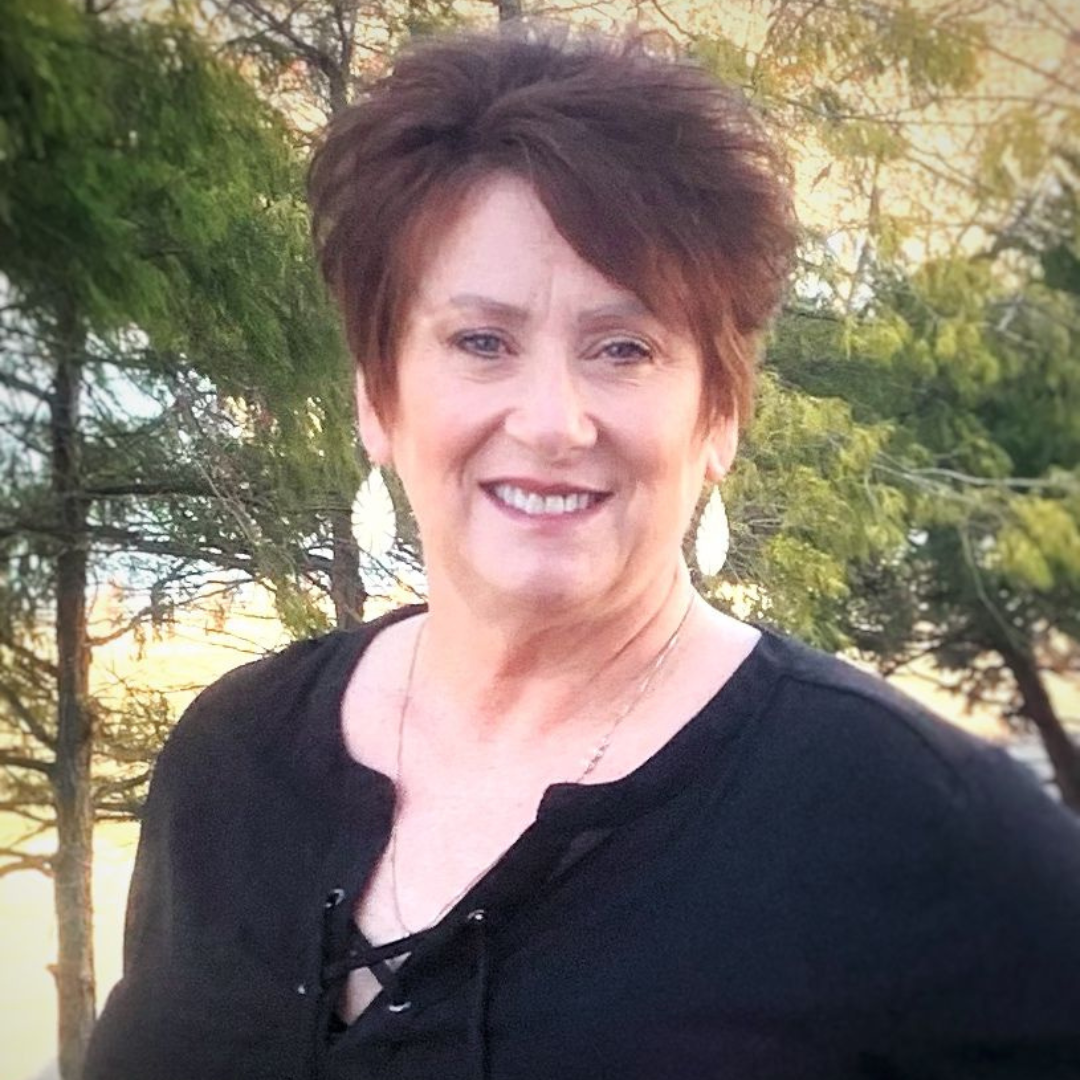Writer’s note: A few months back, I participated in Reality at a Glance (RAAG), a program sponsored by the YWCA. A walking tour designed to educate the public about what crime looks like in real-time, RAAG opened my eyes to an issue that I hadn’t previously given much thought to — human trafficking in the Ohio Valley. I knew it existed, but I had no idea how prevalent it is or how much more there was to it than just coerced sex. What have I learned? For starters, trafficking is much more like the Reba McEntire song “Fancy” (… Mama what do I do/She said just be nice to the gentlemen Fancy/And they’ll be nice to you/She said here’s your chance/Fancy don’t let me down) and a lot less like the movie “Taken” (a retired CIA operative crosses the globe to rescue his kidnapped teenage daughter) than people might think. Part 1 examines the dynamics of human trafficking. In Part 2 – A Survivor’s Story, we meet Angie Conn, a survivor.
STRANGER DANGER?
“Don’t talk to strangers!” All parents teach their children this basic safety rule. But here’s a quick quiz — when teaching your children about “stranger danger,” which of the following people would you be more likely to warn your child to be wary of? (a) A middle-aged mom with a child in tow who compliments your son’s cute outfit; or (b) the creepy man cruising the mall parking lot who is obviously eyeing your daughter?
Most of us would probably answer (b.) We are all suspicious of the stereotypical “bad guy” lurking in the darkness, as we should be. But according to local experts on human trafficking, there are plenty of cunning, covert “recruiters” among us. These more innocent-appearing suspects are statistically more likely to harm unsuspecting youngsters by striking up a conversation, then a friendship, and eventually offering coveted items in return for “services.”
WHAT CONSTITUTES HUMAN TRAFFICKING?
According to the West Virginia Human Trafficking Task Force website, human trafficking is a form of modern-day slavery that uses force, fraud and coercion to control another person and compel them to perform labor or sex acts. It is an illegal industry that nets $32 billion annually, second only to the sales of illicit drugs and weapons. The local opioid epidemic has fueled the industry in our area, as dealers and other recruiters take  advantage of those with substance use disorder, forcing them to perform labor and sex acts in exchange for the drugs they crave.
advantage of those with substance use disorder, forcing them to perform labor and sex acts in exchange for the drugs they crave.
There are several ways that trafficking occurs. First and probably most common in West Virginia is familial trafficking where adults expect their children to perform sex for money and/or drugs to benefit the family. Brothels, “massage” parlors, strip clubs and area street corners are also locations where victims can frequently be found.
Not quite as common in the Ohio Valley is labor trafficking, where farms, factories, restaurants, nail salons, carnivals and other businesses utilize trafficked workers as cheap manpower. Street begging and peddling are also common methods that recruiters use to force their victims to generate cash, telling their workers they cannot see their families or return home until they collect a certain amount of money.
Corporal Sean Brantley of the Wheeling Police Department is a field training officer, K9 handler, crisis negotiator and gang unit liaison to the U.S. Marshal Service. His work in these capacities has put him in direct contact with the local human trafficking industry.
“I can assure you that trafficking goes on in this area, but you often don’t hear about it on a local level because of how sensitive the investigations can be. They are complex, and it can be difficult to build a case because it’s not spoken of much,” Brantley said.
‘STEP’ AWAY FROM TRAFFICKING
Cecily Powell Spangler is the director of the Wheeling YWCA Survivors of Trafficking Empowerment Program. Powell Spangler and Heather Lapp, YWCA chief strategic officer, talked with Weelunk about human trafficking in our area and STEP’s efforts to assist victims.
“There are several types of human trafficking,” Lapp explained.
According to Powell Spangler, the two most prevalent types locally are sex and labor trafficking as mentioned above. Other types that are common in foreign countries are the recruitment of child soldiers and the harvesting of organs such as women’s eggs for black-market reproduction services.
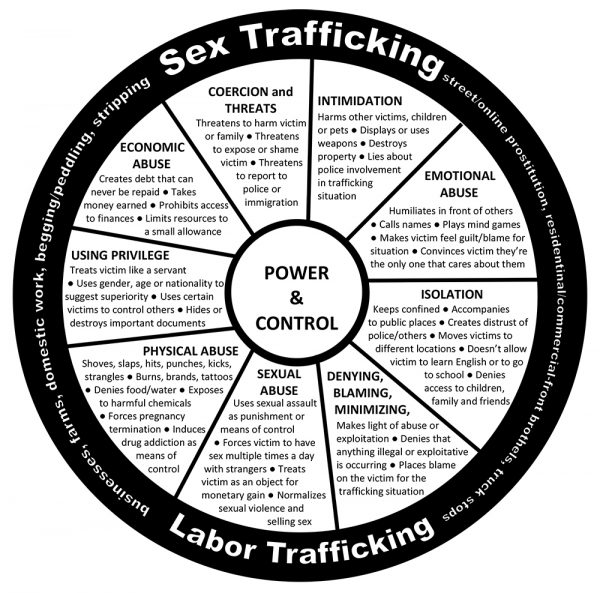
Lapp and Powell Spangler revealed that here in the Mountain State, familial prostitution is an extremely common scenario. In many cases, they said, this form of child abuse spans generations and is considered by the participants to be a perfectly legitimate survival tool. (Think “Here’s your one chance, Fancy, don’t let me down.”) Both boys and girls are abused in this manner.
Brantley confirms that familial trafficking is probably the most common type encountered by local police officers. In other situations, men often force their wives, girlfriends or other adult relatives to work or have sex in order to “earn” a place to stay or the right to remain in the same household as their children.
THE WOLF IN SHEEP’S CLOTHING
Without a doubt, the danger of human trafficking by abduction is real. But in some cases, the “Big Bad Wolf” comes dressed in Grandma’s clothing. “Over 40 percent of recruiters in the trafficking industry are women,” Lapp shared. This statistic stands in direct contrast to the vision of that masked man lying in wait between parked cars. “The majority of victims aren’t ‘snatched’ or ‘kidnapped,’” Powell Spangler said.
In fact, it’s estimated that only about 1 percent of victims enter the industry in this manner. Lapp said that 46 percent of juvenile victims personally know their captors. “In most cases, it’s not like the movie ‘Taken,’” she emphasized.
Recruiters are often family members or acquaintances who spend months grooming their potential victims. Like any predator, they often prey on the weak or disadvantaged; children, the mentally and physically disabled and even senior citizens. Recruiters often follow victims on social media for months prior to their initial contact, watching for those who lack sufficient support systems or who are loners in need of a “friend.” They may contact a potential victim and pose as someone their own age. They may promise their victims housing, meals, child care, friendship, drugs, extravagant gifts — whatever it is that the recruiter perceives they are lacking.
The internet is a trafficker’s dream when it comes to finding targets on social media sites such as Facebook, Instagram and Snapchat. This is the very reason why experts warn parents to closely monitor their children’s internet usage and habits. Recruiters have become very clever at advertising their human “wares” by placing coded ads on mainstream sites like Craigslist. According to Powell Spangler and Lapp, Craigslist and other such marketplace sites make a valiant effort to keep ahead of this illegal scheme. However, traffickers are quick to change course as needed to stay a step ahead of policing.
“For example, a ’plaid sofa’ advertised on an internet site may not be at all what you think it is,” said Lapp. Traffickers have an entire language of code words and emojis to spread the word about their offerings.
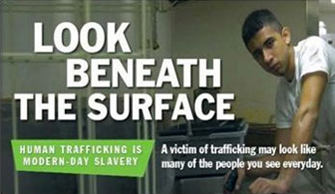 Recruiters also use their personal relationships to their advantage, often telling their partners, “If you love me, you will do what I ask.” Powell Spangler says that “ask” may be having sex with strangers, transporting and selling drugs or begging on a street corner. Consequences for not doing as you’re told range from threatening the victim’s family to physical violence to separating mothers from their babies. Being killed for disobedience is also quite possible.
Recruiters also use their personal relationships to their advantage, often telling their partners, “If you love me, you will do what I ask.” Powell Spangler says that “ask” may be having sex with strangers, transporting and selling drugs or begging on a street corner. Consequences for not doing as you’re told range from threatening the victim’s family to physical violence to separating mothers from their babies. Being killed for disobedience is also quite possible.
“Most underage victims are between 12-14 years old,” Lapp said. “The average length of time a victim is held captive is seven years, because, by that time, they have usually committed suicide, overdosed or been murdered.” Only a very lucky few manage to escape completely.
Though victims can be held captive by the use of physical restraints, they are more commonly bound and broken through physical violence, humiliation and threats. These invisible shackles hold victims to secrecy and shame and cause them to erroneously believe that their situation is somehow their fault.
HELP FOR LOCAL VICTIMS
Human trafficking rarely exists in a vacuum. Most cases also involve substance use and/or domestic violence. STEP works to unravel the intertwined issues and provide victims whatever kind of assistance they are in urgent need of. The program provides emergency shelter, legal referrals and case management services along with addiction recovery and domestic violence-related advocacy. STEP mans a round-the-clock hotline that can be reached by calling 800-698-1247.
STATEWIDE SUPPORT
With traffickers keeping law enforcement on their toes with their constantly changing tactics, what can be done to end the abuse of innocent victims?
Andrew R. Cogar of the U.S. Attorney’s Office, Northern District of West Virginia is the co-founder and co-chairperson of the West Virginia Human Trafficking Task Force. The group consists of federal, state and local law enforcement officers, service providers, victim advocates and others concerned about this issue. The task force aims to educate and raise awareness about trafficking and to train people across various professions to identify and respond appropriately to victims.
How prevalent is trafficking in our state?
“It’s a big problem,” he said. “It’s hard to get our arms around the scope of it for a couple of reasons. It’s an ‘underground’ crime that’s often hidden and can be difficult to identify. In addition, it’s severely underreported.”
Though hundreds of victims may reach out to groups such as STEP across the state each year, few to none are willing to report their circumstances to law enforcement officials for fear of repercussions to themselves and their families.
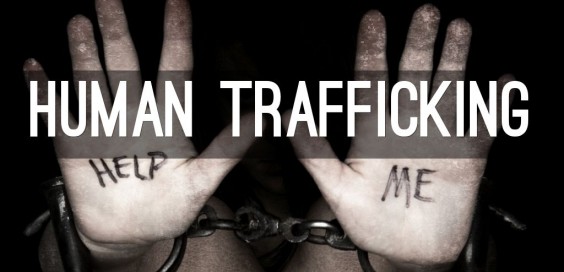 Because trafficking often looks a lot like run-of-the-mill street prostitution, sometimes it can be very hard to discern the difference. This is one reason that the task force seeks to educate law enforcement officers on the issue.
Because trafficking often looks a lot like run-of-the-mill street prostitution, sometimes it can be very hard to discern the difference. This is one reason that the task force seeks to educate law enforcement officers on the issue.
The motivation behind the act is the main difference, according to Cogar. “It all comes down to coercion,” he emphasizes. “Any time someone is compelling another person to provide labor or sex, that is trafficking.”
One population at increased risk of being targeted by recruiters is runaway children. Cogar says that one in seven runaway juveniles will end up being trafficked. In addition to runaways, newly released prisoners, foster kids aging out of the system and LGBTQ youth are also at increased risk of becoming victims.
In Part 2 – A Survivor’s Story, read about the courage and strength of one survivor.
• A lifelong Wheeling resident, Ellen Brafford McCroskey is a proud graduate of Wheeling Park High School and the former Wheeling Jesuit College. By day, she works for an international law firm; by night, (and often on her lunch breaks and weekends) she enjoys moonlighting as a part-time writer. Please note that the views expressed in her writing are solely her own and do not necessarily reflect those of anyone else, including her full-time employer. Through her writing, Ellen aims to enlighten others on causes close to her heart, particularly addiction, recovery and equal rights. She and her husband Doug reside in Warwood with their clowder of rescued cats, each of whom is a direct consequence of his job as the Ohio County Dog Warden. Their family includes four adult children, their spouses and several grandkids.


